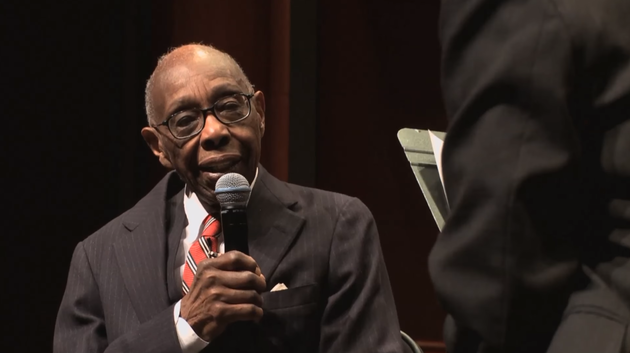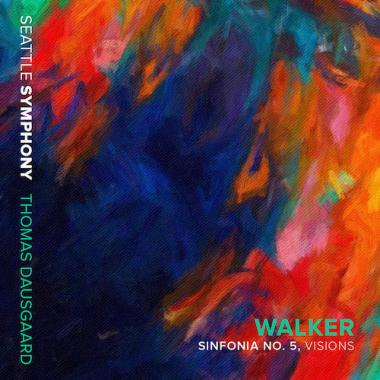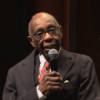
George Theophilus Walker (1922–2018) certainly was not ignored in his lifetime; his bio indicates that he was a highly respected composer, showered with commissions and honors, topped off by a Pulitzer in 1996. But even if race was not a factor, I think mass popularity would have eluded him anyway because he wrote a lot of music in an uncompromising idiom (the soothing Lyric for Strings being an exception) that doesn’t make new friends easily.
Such is the unrelentingly serious, dissonant, choppy, anguished Sinfonia No. 5 (“Visions”), the last composition that the then-94-year-old composer was able to finish — and the last in a series of mostly unrelentingly serious, dissonant, choppy, anguished Sinfonias that together could ironically make up a single, unified, 70-minute, five-part symphony.

Thomas Dausgaard and his Seattle Symphony have just released a digital-only EP of the Sinfonia No. 5 on the orchestra’s in-house label (SS Media), but please, read the publicity carefully. While this is a document of the world premiere live performance, it is not the world premiere recording. A dedicated audiophile, Walker wanted to hear his work in lieu of getting a live performance, so he hired Ian Hobson and the Sinfonia Varsovia — who had already recorded Walker’s first four Sinfonias — to make the first recording (Albany). Only eight months after Walker passed away, Dausgaard and Seattle took it on in Benaroya Hall.
The Sinfonia exists in two versions — one with spoken parts for four voices and the other without (Hobson’s recording includes both while Dausgaard’s has just the one with voices). In the vocal version, Walker includes fragments of the words from various 19th-century songs like “I Dream of Jeannie With the Light Brown Hair,” “Rock of Ages,” et al. (fragments of the tunes are supposedly embedded in the texture but I couldn’t detect them). Dausgaard goes through it at a more urgent pace than Hobson, reducing the total timing from 17 to 14 minutes, and the spoken voices are better balanced against the orchestra.
All of this angst finally comes to a head when the voices speak of the docks of the New World where slaves were chained and auctioned off. Walker was midway through the piece when the 2015 killings in a Charleston, South Carolina, church took place, and that atrocity spurred him on, the Charleston waterfront being the historical main port of call for the slave ships. The live performance also had Frank Schramm video clips and still images selected by Walker himself.
Not only does the piece make better sense in the vocal version, it is as if all five Sinfonias have led up to this denouement. I still don’t like the piece much, but I think I understand it better.




